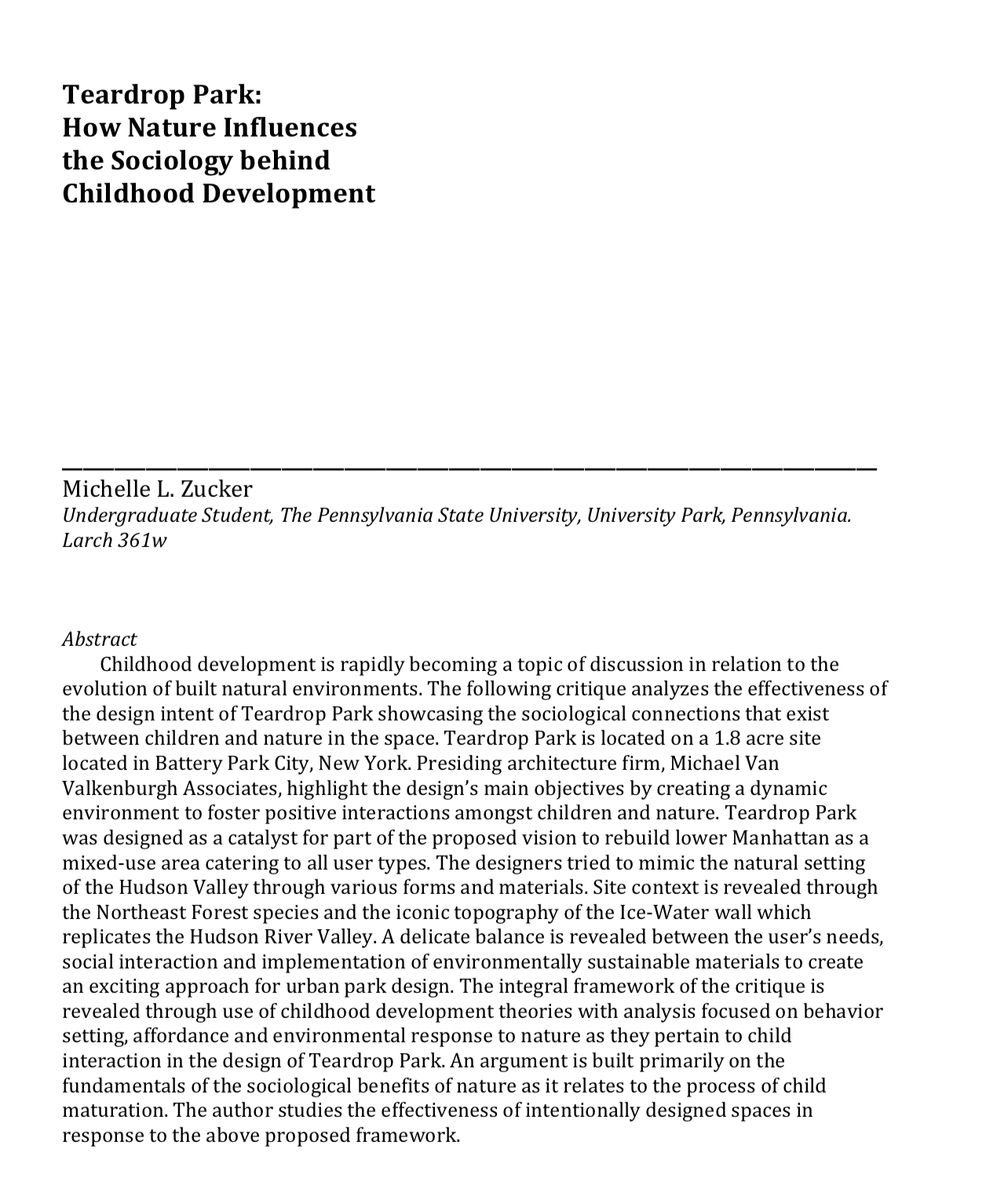MZucker_Assn 8
MZucker_A Text Exploration

I decided to analyze a paper from my undergraduate education where I analyzed how the design intent of park in New York City and the actualization of it were a reflection of one another. This paper was fundamental in my development as an academic and finding my critical voice in the field. Tear Drop Park in NYC, while beautiful and reminiscent of nature, failed to fulfill the design intent for improving child development through nature. The topic at hand is an important one as much research backs the need for children to access nature regularly, particularly when living in congested cities such as NYC. My desire to analyze the text is two fold; 1) to understand the developments in the topic since the paper was written in 2012 and 2) to find similar sources of information or arguments for why children need to live in close proximity to nature to aid in their psychological development. When using the JSTOR Text Tool, at first I was quite confused. While the results were populous, it didn’t appear to have pulled out key topics and concepts from the paper. Upon reading the relatively straightforward instructions, I added key priority topics to further refine the search as seen below.

When looking at the relevant results based on the updated priority list, I was struck by the lack of contemporary or recent resources. The top result, while holding an interesting title “Urban Design Workshops: A Planning Tool”, was written in 1997. I browsed through the rest of the top results and noticed a similar trend in that most articles were written well before my paper, the closest being 2010, however the topic being quite different. The results got me thinking and opening up a larger critique of the field of urban design and planning. While we have case study after case study of various projects, especially in regards to children’s playscapes, the field doesn’t tend to look inward as often as it should. The disconnect between design intent and actualization can be felt when looking at the statistics of how children have historically used Teardrop Park. Similar to an observation I’ve made when attending most public spaces. Looking at grassy areas, desire lines or informal paths can often be found carved out of the landscape. This serves as a key indicator that the frequent users of the park may not be using the path system or park features as intended. While this argument is a bit of a digression from the assignment, I think it is important to note that this observation, reflection and analysis are only made possible when applying both text analysis and human interpretation. I believe that text analyzing tools have the ability to cut down on processing and research time but will always need to be consulted with and supplemented by experts in the field.
As noted by JSTOR in the Frequently Asked Questions section,”Text Analyzer is still in beta and is, frankly, a machine. It’s not perfect. When it recommends strange topics, this can be because there wasn’t as much text for it to analyze or because the text contains language (such as an extended metaphor) that “fools” Text Analyzer into thinking it’s about something it’s not.”